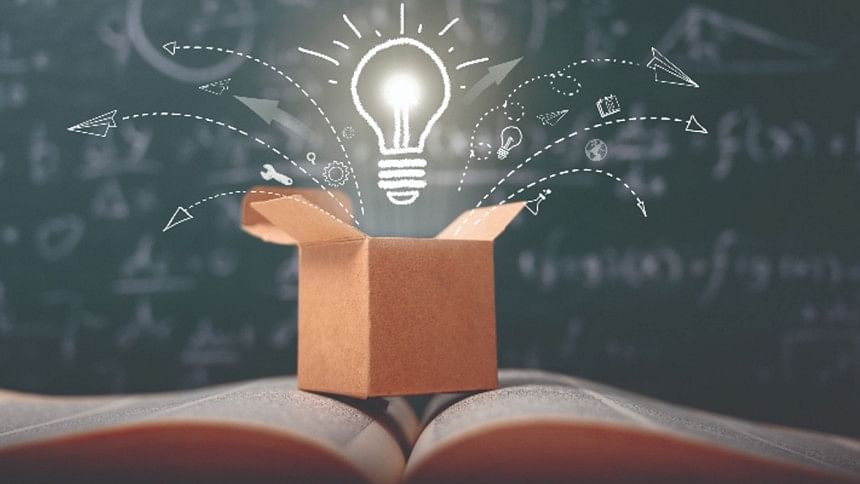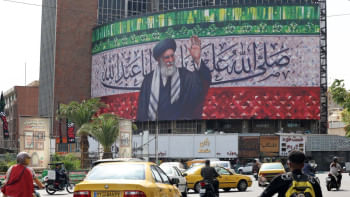Reimagining post-Covid primary education

Bangladesh was quick in response to the educational challenges brought on by the pandemic in 2020, initially through Ghore Boshe Sikhi, and then through Bangladesh Betar. Meanwhile, NGOs, and the civil society came forward to address its related challenges, primarily to reach the unreached. Multiple surveys indicate that a small proportion of households (10-21 percent) in Bangladesh benefitted from some remote education, and there were differences, between poor (15 percent) and non-poor (26 percent) households (c.f. SANEM 2021, BIGD&PPRC 2021). A Brac study on feature phone-based remote learning suggests that children in junior classes (Classes 1 and 2) had better learning outcomes compared to their fellows in more senior classes (c.f. Evana and Swarna 2020). Other studies on school closures during the pandemic indicate that the learning loss effect reflects on the cumulative impact of knowledge learned (c.f. Per Engzell and Mark Verhagen, 2021, BIGD & PPRC 2021).
In Bangladesh, where schools remained closed for more than a full academic year, learning loss is a complex issue. Consider a rural child who graduated to Class 2 in January 2020 with some amount of learning deficit (as is the case for most children), and barely participated in remote learning during the pandemic. That child is now in Class 3. Depending on school reopening modality (in phases vs all at once), academic year plan, and year-end assessment policies, this child may complete Class 3 this year and move to Class 4 in 2022. In this instance, not only did the child not learn the required skills and competencies of Class 2 (and some part of Class 3), but he/she likely lost some of the skills and competences that were learned in Class 1. The situation will be worse for children in senior classes.
A "business-as-usual" academic approach with some remedial sessions is unlikely to be enough. The situation demands innovative thinking, courageous steps, prioritisation of resources, thoughtful targeting, and a clear road map for the next few years. The ultimate leadership lies with the government, but the private sector, NGOs and the civil society can help, as they have done in the past.
Here are six areas I consider critically important in addressing learning loss and learning divide issues in a sustainable manner:
Learning loss
Awell-planned remedial intervention to compensate for missed lessons is needed—but it cannot be a short-term measure, it has to be a multi-year effort. The plan must consider subjects, delivery approach, classroom pedagogy, effectiveness, and teachers' reorientation and training needs. It will be worthwhile to focus on key subjects, such as Bangla, Mathematics, and Bangladesh Studies/English, particularly for the first few months (3-4) after schools reopen. A good proportion of the children will need a brush up, and some students will find it challenging to cope with a classroom environment again.
Pedagogy will be important. Assessing learning gaps in the classroom when schools reopen will help teachers better understand children's learning levels and diversity. A classroom in most mainstream schools in Bangladesh has a large body of children, particularly in the early grades, representing diverse socio-economic backgrounds, home support, and learning levels. Making such a classroom an interactive and learning-friendly space will be no easy task. However, it is what would be required to ensure that children enjoy coming to school, gain confidence, and learn class-relevant basic skills.
Learning together and in team (LTT)
There are schools in Bangladesh where children are encouraged to observe, act, analyse, create, and reflect—instead of merely memorising content; however, the number of such schools is limited. Where they operate, teaching-learning is a collaborative effort, with teachers acting more as mentors than conventional instructors, and students participating actively in the process of learning. Students have a learning space both as individuals and as team members in three to four-student groups. Under the teacher's guidance, students are engaged in activities such as experiments and problem-solving, both inside and outside the classroom.
In-classroom activities (individual or group level) include assignments like reading difficult content, solving mathematical problems, drawing on specific themes, and checking each other's progress. Learning can (and should) go into real life where it is more fun, and with children in senior classes working as a group on assigned tasks like listing neighbourhood plants and trees, and categorising them by species, longevity, etc. The activity could also enlist the parents and community to help—and assignments can be customised to make the most of the school's neighbourhood. At the end of the activity, students can present their findings to the class, answer questions, and even decide on a score for each team. This type of teaching and learning will enable students to learn skills such as listening, questioning, observation, analysis, presentation.
Supplementary interventions
Classroom and school-level efforts need to be supplemented to bridge the gap between children in a class. Supplementary sessions can be organised through different modes (Bangladesh Betar, community radio, TVs), ideally 2-3 times a week including the weekend. Fortunately, there is already an existing stock of material which can be repurposed for this. There are also precedents for such sessions, like schools and libraries screening films and sessions organised for pre-primary children through community radios. Once implemented, these sessions will have knock-on benefits; near-term, children who miss a class for whichever reason, will benefit from the supplementation while in the longer run, these sessions will make for a more resilient learning system.
Assessments
Alearning system cannot be changed without changing the assessment system—and thus assessments of children's learning outcomes represent another important area of work. Post-pandemic teaching, learning and remedial courses would require a functional formative assessment system that schools can organise. The assessment system would have to include the development of instruments, administration of tests in the classroom, and most importantly, analysis of the results that can be acted upon. Retaining these records will allow for comparisons across time as an added benefit.
Teachers' preparation
Preparing teachers, and supervisory staff for the new teaching learning system represents another important task. A one-size-fits-all approach will not work here given the diversity in teachers' initial education, pedagogical orientation, and experiences. The actual training will have to be conducted in a way that prepares teachers for new mechanisms of learning, classroom teaching, and assessment—with a component of experiential, on the job learning if needed. This module will ensure that knowledge, skill, rationales and mindset-related factors are addressed. It is likely that the initial course will have to be followed up by post-training refreshers for some teachers.
The infrastructure to roll this out already exists for public sector schools. However, local kindergartens and non-formal NGO schools will be challenged, and this is an area where the government, development partners, and larger NGOs could help.
Finally, as mentioned earlier, the disruptions caused by the pandemic demand that we act decisively and boldly to compensate for the disruption to children's education. As with any meaningful change, it would require careful process and outcome-level monitoring to ensure the benefitsare borne out in real-life, and adjustments are made where necessary.
Dr Safiqul Islam, former Director, Brac Education Programme (BEP).

 For all latest news, follow The Daily Star's Google News channel.
For all latest news, follow The Daily Star's Google News channel. 



Comments